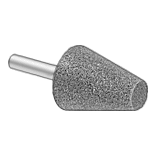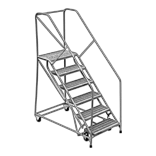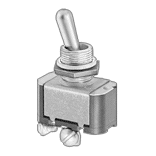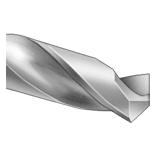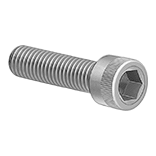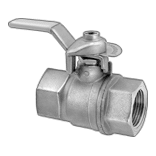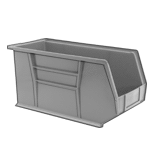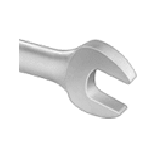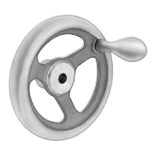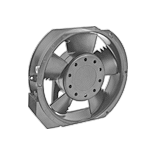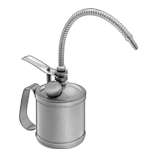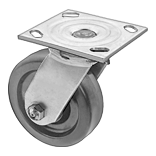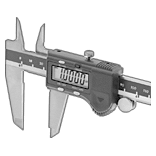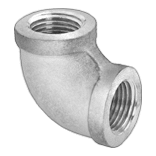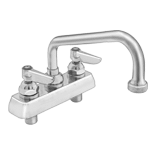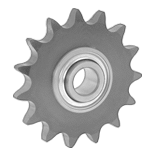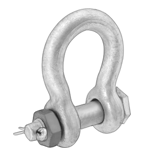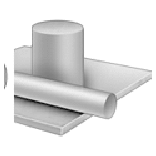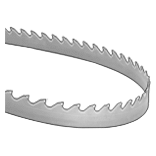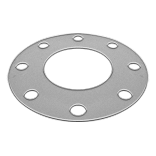About Timer Relays
More
Wireless Enclosed Relays
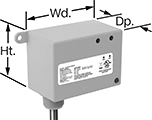
Send a signal to turn equipment on and off from up to 150 feet away without having to run electrical wire. These relays have an enclosure to protect the terminals from dust and accidental bumps. They can be set to transmit, receive, or both at once. You’ll need at least two relays to switch a device. They have an alarm that can be set to check for certain conditions before transmitting a signal. For example, you could set these relays to send a signal to turn on an air conditioner if all windows are closed. The repeat function extends the transmitting signal through a maximum of two receiving relays.
Relays that are set to transmit can be linked up to as many receiving relays as you need. Relays set to receive can be linked up to 30 transmitting relays. All relays connect to dry contacts on your switch, sensor, or controller. Use the wire leads to connect them to a power source.
UL and C-UL listed, all meet American and Canadian safety standards. Rated NEMA 1, they should only be used indoors.
For technical drawings and 3-D models, click on a part number.
Wire Lead | Conduit Connection | |||||||||||||||
|---|---|---|---|---|---|---|---|---|---|---|---|---|---|---|---|---|
| Input Voltage | Control Current | Switching Current @ 277V AC | Maximum Switching Voltage | hp @ Switching Voltage | Ht. | Wd. | Dp. | Maximum Transmission Distance, ft. | Lg. | Number of | Gender | Trade Size | Thread Type | Environmental Rating | Each | |
1 Circuit Controlled with 1 Off (Normally Open) or 1 On (Normally Closed)—SPDT | ||||||||||||||||
| 120V AC | 73 | 20A | 277V AC | 2 hp @ 277 V AC | 2.3" | 3.2" | 1.8" | 150 | 16" | 7 | Male | 1/2 | NPT | NEMA 1 | 0000000 | 0000000 |
| 208V AC | 80 | 20A | 277V AC | 2 hp @ 277 V AC | 2.3" | 3.2" | 1.8" | 150 | 16" | 7 | Male | 1/2 | NPT | NEMA 1 | 0000000 | 000000 |
| 240V AC | 80 | 20A | 277V AC | 2 hp @ 277 V AC | 2.3" | 3.2" | 1.8" | 150 | 16" | 7 | Male | 1/2 | NPT | NEMA 1 | 0000000 | 000000 |
| 277V AC | 80 | 20A | 277V AC | 2 hp @ 277 V AC | 2.3" | 3.2" | 1.8" | 150 | 16" | 7 | Male | 1/2 | NPT | NEMA 1 | 0000000 | 000000 |
| 24V AC, 24V DC | 69 | 20A | 277V AC | 2 hp @ 277 V AC | 2.3" | 3.2" | 1.8" | 150 | 16" | 7 | Male | 1/2 | NPT | NEMA 1 | 0000000 | 000000 |
Smart DIN-Rail Mount Multifunction Timer Relays


Whether installed in an electrical cabinet or hard-to-reach area, these timer relays are controlled remotely from your smartphone. They connect to your phone via a free downloadable app with NFC (Near Field Communication), so you can set time delay ranges, adjust settings, and save programs. An LED indicator on the relay shows that your switch is on and whether it’s actuated. Mount them directly to 35 mm DIN rail (also known as DIN 3 rail).
Although these relays have 30 different functions, they all fall into 11 categories. Within these categories, you can select different functions to allow you to add a switch, program a delay, or change how the relay responds to a trigger (turning on or off, pausing, or resetting).
Manual Switch Control—Use these functions to turn the relay on and off with a switch.
Fixed On/Off—The on function keeps the relay on whenever input voltage is applied; it will only turn off if the voltage is removed. The off function keeps the relay in an off state, even if input voltage is applied.
Switch-On (Single-Shot)—These functions require a switch to activate the relay, which stays on for the programmed amount of time. For example, lights in a storage room are turned on with a switch and stay on for a set time before turning off.
Delayed Start (Delay-on-Make)—These functions allow you to set how long it takes for the relay to turn on after input voltage is applied. For example, a drill starts pumping lubricant immediately, but it does not start rotating until the set time has elapsed.
Delayed Switch-Off (Delay-on-Break)—These functions use a switch instead of input voltage. When the switch is turned off, the relay remains on for a programmed amount of time before turning off. For example, a projector’s light is turned off with a switch, but its cooling fan continues to run for a set time.
Delayed Switch-On with Delayed Switch-Off—This function uses a switch instead of an input voltage. It allows you to set how long it takes the relay to turn on after a switch is turned on, and how long it will stay on after the switch is turned off. For example, a furnace turns on, but the fan doesn’t start pushing air through the vents until it has been heated. When the furnace turns off, the fan keeps blowing to circulate all the hot air.
Interval—These functions use input voltage to turn on the relay for a programmed amount of time. For example, when a part moving down a conveyor reaches a certain location, a cleaning spray comes on for a set amount of time.
Repeat Cycle—These functions start with an on cycle and then alternate between an on cycle and off cycle of equal durations until input voltage is removed, such as with a flashing light.
Asymmetrical Repeat Cycle—These functions start with an on-cycle and then have an off-cycle, but these cycles have different durations. The cycles repeat until input voltage is removed. For example, a sprinkler system sprays in short bursts followed by longer rest periods, on and off until input voltage is removed.
Switch-On Asymmetrical Repeat Cycle—These functions require a switch to activate the timing function. The input voltage is applied the whole time, and when you turn the switch on, the relay begins with an on-cycle followed by an off-cycle. These cycles have different durations, and they repeat until you turn the switch off. They could be used to turn on a motor or other system for a short period and then turn it off for a longer rest period, repeating that pattern until the switch is turned off.
Star-to-Delta—These functions allow you to set the time delay within the relay's range to switch contacts on a three-phase motor from star to delta configuration. Since star configuration takes less voltage to start than delta, these functions prevent voltage dips that often happen when a motor starts and are gentler on mechanical parts.
For technical drawings and 3-D models, click on a part number.
| No. of Terminals | Input Voltage | Control Power, W | Timer Relay Function | O'all Timing Range | Switching Current @ 240V AC | Max. Switching Voltage | Ht. | Wd. | Dp. | Operating System Compatibility | Features | Each | |
1 Circuit Controlled with 1 Off (Normally Open) or 1 On (Normally Closed)—SPDT | |||||||||||||
|---|---|---|---|---|---|---|---|---|---|---|---|---|---|
| 8 | 12V AC, 24V AC, 48V AC, 120V AC, 240V AC, 12V DC, 24V DC, 48V DC, 60V DC, 120V DC, 240V DC | 0.15 | Manual Switch Control Fixed On/Off Switch-On (Single-Shot) Delayed Start (Delay-on-Make) Delayed Switch-Off (Delay-on-Break) Delayed Switch-On with Delayed Switch-Off Interval Repeat Cycle Asymmetrical Repeat Cycle Switch-On Asymmetrical Repeat Cycle | 0.1 sec.-999 days | 8A | 250V AC | 4.1" | 0.7" | 2.5" | Android 5.0 or Later, iOS 14.4 or Later | LED Indicator | 0000000 | 000000 |
2 Circuits Controlled with 2 Off (Normally Open) or 2 On (Normally Closed)—DPDT | |||||||||||||
| 9 | 24V AC, 48V AC, 120V AC, 240V AC, 24V DC, 48V DC, 60V DC, 120V DC, 240V DC | 0.6 | Manual Switch Control Fixed On/Off Switch-On (Single-Shot) Delayed Start (Delay-on-Make) Delayed Switch-Off (Delay-on-Break) Delayed Switch-On with Delayed Switch-Off Interval Repeat Cycle Asymmetrical Repeat Cycle Switch-On Asymmetrical Repeat Cycle Star-to-Delta | 0.1 sec.-999 hrs. | 8A | 250V AC | 3.5" | 0.9" | 2.9" | Android 4.4 or Later, iOS 14.5 or Later | LED Indicator | 0000000 | 00000 |
